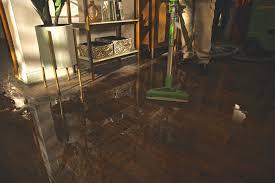Trauma scene cleanup, also known as crime scene or biohazard cleanup, is a highly specialized service aimed at restoring environments affected by traumatic events. These events may include homicides, suicides, unattended deaths, accidents, or other situations where blood and bodily fluids are present. Trauma scene cleanup is not only crucial for restoring a safe and clean environment but also for addressing the emotional and psychological impact such scenes can leave on family members, first responders, and the community.
Why Trauma Scene Cleanup Is Necessary
Trauma scenes often involve biohazardous materials such as blood, tissue, and other bodily fluids. These materials can carry infectious diseases including hepatitis B and C, HIV, and other pathogens. Attempting to clean such areas without proper training, equipment, and protective measures can put individuals at significant health risk. Professional trauma scene cleanup services are trained to handle these hazards safely, ensuring that the affected area is sanitized and safe for future use.
Besides health concerns, trauma scenes can also cause emotional distress for those who live or work in the affected area. Professionals trained in trauma scene cleanup understand the sensitivity of these situations and often provide compassionate service while maintaining strict adherence to safety protocols.
The Process of Trauma Scene Cleanup
-
Assessment and Safety Measures
The first step in trauma scene cleanup involves assessing the site to determine the extent of contamination and the type of biohazards present. Cleanup technicians wear personal protective equipment (PPE), including gloves, masks, eye protection, and full-body suits, to prevent exposure. They also implement containment strategies to ensure that hazardous materials do not spread beyond the affected area. -
Removal of Contaminated Materials
Biohazardous waste such as blood-soaked carpets, furniture, and other porous materials must be carefully removed and disposed of according to state and federal regulations. Non-porous surfaces, such as floors, walls, and countertops, are thoroughly cleaned and sanitized using hospital-grade disinfectants. Trauma scene cleaners are trained to use specialized techniques to remove stains and odors effectively while preventing cross-contamination. -
Decontamination and Sanitization
After removing contaminated materials, the area undergoes thorough decontamination. This step involves cleaning all surfaces with disinfectants that kill pathogens and prevent disease transmission. Advanced cleaning methods, such as ozone treatments, fogging, and thermal remediation, may be employed to ensure that the space is not only clean but also safe for reentry. These methods are particularly useful for eliminating lingering odors that traditional cleaning cannot remove. -
Final Inspection and Restoration
Once the cleaning process is complete, the trauma scene cleanup team conducts a final inspection to ensure that all biohazardous materials have been removed and that the area is safe. In many cases, minor repairs or replacements may be needed to restore the property to its original condition. Some trauma scene cleanup companies also offer restoration services, such as repainting walls or replacing flooring, to help families or businesses return to normalcy more quickly.
Choosing a Professional Trauma Scene Cleanup Service
It is essential to hire a certified and experienced trauma scene cleanup company. Professionals in this field must comply with OSHA (Occupational Safety and Health Administration) standards, state health regulations, and EPA (Environmental Protection Agency) guidelines for hazardous waste disposal. A reputable trauma scene cleanup company will provide prompt service, maintain confidentiality, and handle all aspects of the cleanup process, allowing families and business owners to focus on emotional recovery.
When choosing a trauma cleanup service, consider the following factors:
-
Certification and Training: Ensure the company has certified technicians trained in handling biohazards safely.
-
Experience: Companies with years of experience are better equipped to handle complex situations efficiently.
-
Compassionate Service: Trauma cleanup can be emotionally challenging for clients. A professional team should demonstrate empathy and sensitivity.
-
24/7 Availability: Traumatic events can happen at any time, and rapid response is crucial to prevent further contamination or damage.
The Emotional Aspect of Trauma Scene Cleanup
Trauma scene cleanup is not just a physical process; it also carries an emotional dimension. Families returning to a scene after a tragedy may find it overwhelming and traumatic. Cleanup professionals often work with mental health considerations in mind, providing support and respecting the privacy and dignity of those affected. In some cases, companies may even coordinate with grief counselors to offer additional support during this difficult period.
Preventing Health Risks and Legal Liability
Improper cleanup of trauma scenes can lead to serious health risks and potential legal liabilities. Bloodborne pathogens, if left untreated, can infect anyone who comes into contact with the contaminated area. Additionally, failure to follow proper disposal regulations for biohazardous waste can result in hefty fines or legal consequences. Hiring a professional trauma scene cleanup service ensures compliance with all safety and legal requirements, protecting both the property owner and the public.
Conclusion
Trauma scene cleanup is a critical service that combines safety, professionalism, and compassion. By addressing both the physical and emotional challenges of trauma scenes, these services help families, businesses, and communities recover more safely and effectively. From removing biohazardous materials to restoring properties to safe conditions, trauma cleanup professionals play a vital role in managing the aftermath of tragic events. Choosing a certified and experienced company ensures that the cleanup process is handled efficiently, legally, and with the respect and sensitivity that affected individuals deserve.
In essence, trauma scene cleanup is about more than just cleaning—it’s about creating a safe environment, preventing health risks, and supporting recovery after traumatic incidents. For anyone facing such circumstances, professional trauma scene cleanup is an indispensable service that ensures safety, compliance, and peace of mind.

